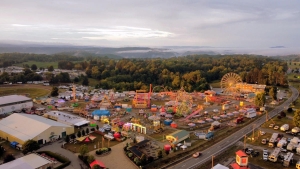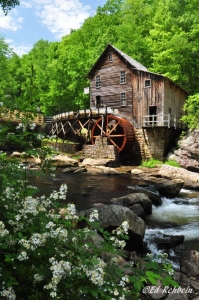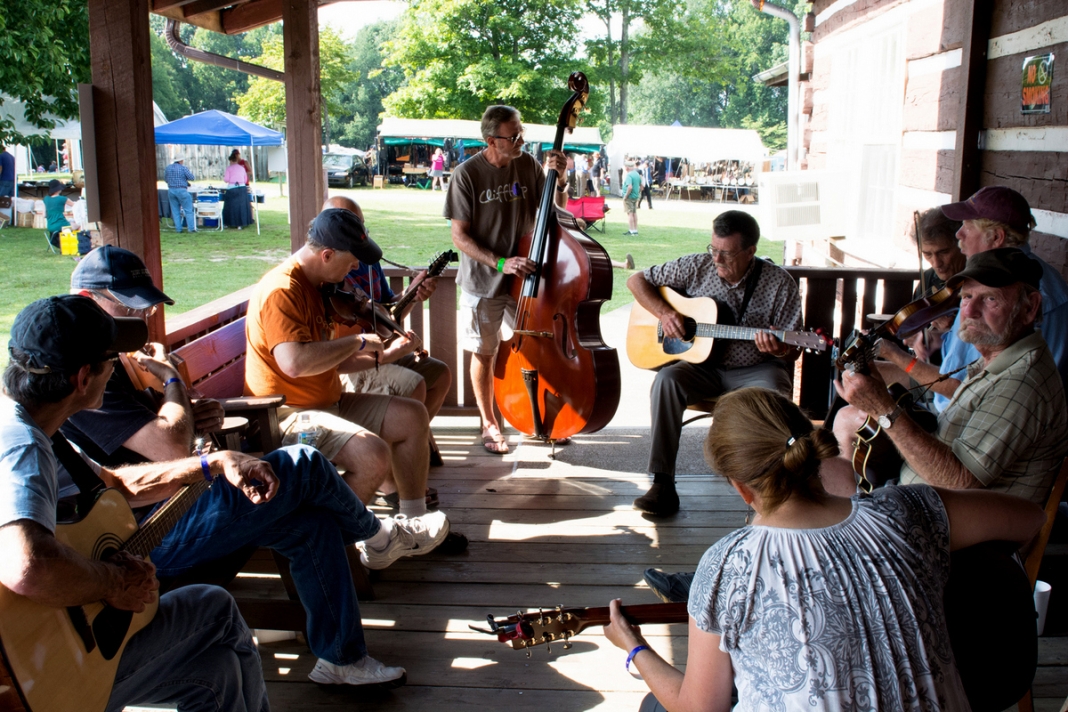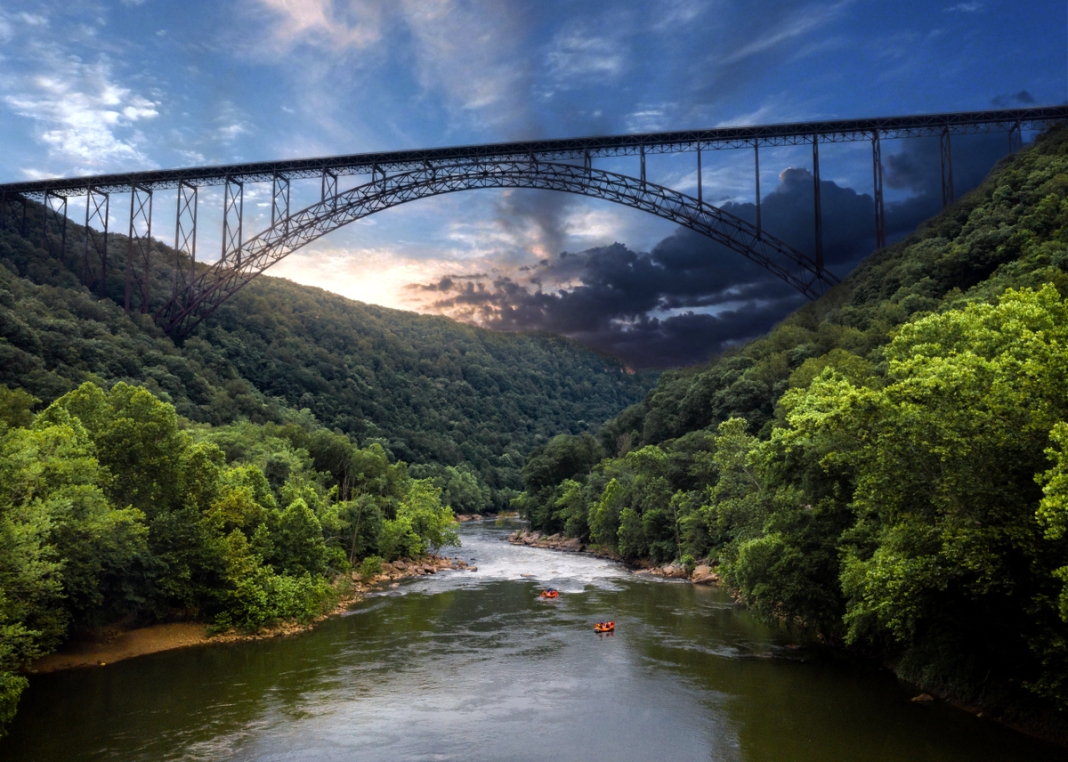CHARLESTON, W.Va. — August in West Virginia is a time of celebration. Its hills and hollows awaken to a season steeped in rituals of music, harvest, craft, and community. Old‑time Mountaineers historically marked August as a time of summer’s end and a season of festivals, fairs, and regional traditions passed down through generations.
Summer’s Yield: Harvest and County Fairs
For generations on family farms in the Mountain State, August was a peak of agricultural activity. Conservatively, the earliest tomato and bean harvests gave way to corn and squash, with baskets filled, preserves started, and fields shared widely at local fairs. County and regional fairs brought neighbors together to display livestock, quilts, canned goods, and produce in competitive exhibitions.

One of the state's longest‑running events, the State Fair of West Virginia, held each mid‑August at Fairlea, near Lewisburg, began in the late 19th century. The fair offered draft‑horse pulls, horse shows, harness racing, livestock judging, garden produce displays, fine needlework, cookery competitions, and chainsaw artistry events like logrolls or axe‑throwing. 4‑H and Future Farmers of America exhibits brought youth into the fold, showcasing flowers, food, arts and crafts, and agricultural produce.
This fair remains an enduring August tradition. Even now, locals and visitors savour funnel cakes, giant cinnamon rolls, carnival rides, musical entertainments, barnyard competitions, and the punctuated rhythms of Appalachian clogging groups. Historically, community pride and rural resilience were on full display under the hooped tent poles and midway lights.
Music in the Mountains: Old‑Time Legacy
Nothing captures August in West Virginia more than the spontaneous music spilling from campfire circles near the brink of the New River Gorge.

Since 1990, the Appalachian String Band Music Festival has convened in late July and early August at Camp Washington‑Carver at Clifftop near Babcock State Park. Here, thousands of lovers of old-time music gather for a week of workshops, contests, dances, and nightly jams in tents and campsites. Competitions include old‑time fiddle, banjo, flatfoot dancing, and band contests. Workshops span traditional and neo‑traditional styles—Celtic, swing, Cajun, bluegrass, and hymn singing all flow from acoustic strings.
Historically, mountain cabins and front porches sang with fiddle tunes, banjo picking, and square dancing in August when harvests slowed and families celebrated under the stars. The festival echoes those old‑time roots: tunes passed from Blind Alfred Reed to modern practitioners now honored in the halls of West Virginia heritage. Through "Clifftop," as the festival is sometimes known, the fiddle—rooted in 18th‑century British Isles immigration—returns every August to showcase Appalachian identity.
Water, Wood, and Community: Regional August Festivals
Other August traditions in the Mountain State took shape around local heritage and community-specific celebrations:
- The West Virginia Water Festival, historically held in Hinton during early August, included paddle races, parades, craft shows, “Little Miss Mermaid” contests, rubber duck races, pancake breakfasts, street dances, and family crafts. It honored West Virginia’s river culture and life by the rails.
- The West Virginia Festival of Glass in Milton, home of the Blenko Glass Factory, celebrates the state’s historic glass industry, offering glass‑blowing demonstrations, artisan booths, food, and live music—a nod to industrial heritage anchored in local pride.
- The West Virginia Peach Festival in Romney, held since the early 21st century but embodying a longer tradition of fruit harvest celebrations, blended fiddlers, pageants, craft vendors, and peach desserts into community festivity.
- In Philippi, "Lurch Fest" originated in homage to celebrity and local son Ted Cassidy, who portrayed the morose butler on the classic sitcom The Addams Family, mixing costume contests, live music, and quirky local charm—cleverly bridging pop culture and hometown roots in early August.
- The Lewisburg Literary Festival, emerging more recently in the first weekend in August, reflects West Virginia’s growing cultural mix, bringing authors, poetry readings, workshops, and small‑town hospitality to literary lovers.
Harvest Rituals and Appalachian Lore
Beyond organized events, life in August in the Mountain State is imbued with folklore grounded in land and weather cycles.

Traditionally, August in West Virginia is marked by warm, humid days that often tip into the mid-to-upper 80s, punctuated by heavy afternoon thunderstorms that roll across the mountains with little warning. Morning fog settles thickly in its hollows, particularly along river valleys, a phenomenon so reliable that old-timers used to count each foggy dawn in August to predict the number of snowfalls in the coming winter.
While the month is generally drier than early summer, lingering humidity can make the heat feel oppressive, and sudden downpours are common, especially in the highlands where cooler mountain air meets the warm valley atmosphere. By the last week of August, a subtle shift hints at autumn’s approach—crisper mornings, cooler evenings, and the first faint yellowing of the leaves on the ridges, a quiet promise that summer’s reign is nearing its end.
Some elderly Mountaineers say that counting foggy mornings in August can predict snowfall in winter—a folk belief found in the mountains even today, where some still drop a bean in a jar for each foggy dawn as an omen or amusement.
Storytelling sessions on porches as twilight fell carried tales of coal miners, haunted hollows, or the great labour struggles. The memory of the Battle of Blair Mountain, the first skirmishes of which began in late August 1921, still resonates in communal memory in the southern state. These customs reveal how August in West Virginia served as both a time of labor and reflection—a harvest for the fields and memory.
August’s rhythm in historical perspective
Agriculture: August represented the slow, untilled days between bean drying and school’s start. Farm kitchens converted fresh produce into preserves, canning beans and tomatoes, pickling corn and cucumbers. Preserving food for winter was a tradition; August hours at the pantry, the smokehouse, and the garden were rites of passage.
Music: August evenings, door-stops and porches echoed with tunes. The fiddle’s plaintive waltzes and breakdowns lured dancers into square sets, old flat venues, and later barn dances. By 18th‑ and 19th‑century standards, community dances anchored social gatherings—Augusta County dances, church socials, scouts of local sides calling reels.
Festivals: As industrialization reached Appalachia in the late 19th and early 20th centuries, fairs blossomed. They served agricultural economists and rural marketing points—displaying livestock, grain, handicrafts, baked goods, arts, and quilting. County fairs became not only a competition but a social highlight. When the state fair began around 1881, it tied together rural life’s pride with an increasingly organized spectacle.
Labor: Late August in West Virginia also recalls labor upheaval. The end of August 1921 marked the start of the Battle of Blair Mountain, where miners confronted coal operators’ forces. While that week‑long event extended into September, communities of southern West Virginia still recall August’s shadow and union memory every year.
A feature montage: August today through an old‑time lens
In modern times, West Virginians often wear vintage heritage on their sleeve in August, but the roots remain deeply embedded.
- The Lewis County Bluegrass Festival in mid‑August celebrates traditional music rooted in local families and acoustic instrumentation.
- The Mountain Spirit Pow-Wow, although more recent, honors Indigenous tradition in late‑August at the state border with Pennsylvania—a sign of evolving recognition of Native American heritage in the state.
The Heritage Music & Blues Fest in Wheeling, and specialized craft fairs, Italian heritage festivals, Cupcake and Sunflower festivals around the end of August, underscore both revitalized and newly invented traditions that echo the communal spirit of earlier decades.
Why August Still Matters in West Virginia’s Old‑Time Tradition
August in West Virginia pivots between the summer growth and harvest, tapering into school and cooler evenings. Families preserved, children returned to classrooms, and porch gatherings resumed a slower rhythm.
The communities of West Virginia have long used music—especially fiddle tunes—to anchor celebrations. August gatherings, from front‑porch hoedowns to Clifftop workshops, continue that legacy.
Fairs displayed the best of local labor—garden produce, quilting, canning, livestock, and crafts. County fairs and the state fair allowed competition and pride to flourish.
Events like the Battle of Blair Mountain linger in memory; festivals now honor that history along with evolving heritage, from Native American dance to Appalachian storytelling to industrial craft.
Voices From the Hills: Oral Tradition and Folklore
Across generations, old‑time West Virginians recounted August’s weather signs. As noted earlier, “every foggy dawn a bean” was dropped into a jar to guess winter snow. That humble superstition persists in some places, not a severe forecast but a link to mountain folk wisdom.
Storytellers spoke of August lightning storms signaling the witching bees—wild swarms believed to bless barns if caught gently. Others recalled under‑the‑stars gatherings, where children chased fireflies until harvest‑moon nights gave way to cooler hush.
Grandparents recalled picking hickory nuts and pawpaws when school’s first bell would echo on Monday morning—a bittersweet end to August days.
Looking Forward: August 2025
This August, the age‑old and the contemporary converge. The State Fair of West Virginia returns August 7–16, offering livestock shows, crafts, cooking demos, musical entertainment, circus acts, draft-horse competitions, and artisan displays—all under the lingering summer sun.
The Appalachian String Band Festival begins in early August near Clifftop, reviving square dances and old‑time music under the pines. Local regional celebrations—Lurch Fest (Aug 3 in Philippi), Bluegrass Festivals, Glass and Peach Festivals, Lakeside artisan fairs, literary gatherings—continue to bring communities together in August across the state.
Heritage events like Appalachian Heritage Day in Pocahontas County, literary fests, and lake‑festival art fairs remind visitors that August still embodies a season of living traditions and community roots.
The Enduring Spirit of August in West Virginia
For old‑time West Virginians, August was more than a calendar month. It meant finishing the harvest, canning tomatoes and beans, gathering at fairs to exhibit and compete, playing fiddle tunes on damp nights, dancing square steps in lantern glow, recalling labor struggles, counting fog with beans, and telling stories on door stoops. It blended toil and art, small communities with significant events, heritage, and renewal.
Today’s August festivals and fairs—modern in scale but traditional in spirit—carry forward that legacy. The state fair and music festivals echo the rhythms of rural pride and community joy, and craft fairs and literary gatherings underscore a growing and diversifying heritage; mountain lore and folklore persist in family stories.
August in West Virginia is still the month when the old ends and the new begins—when summer’s light softens, and mountain traditions shine brightest.
Sign up to receive a FREE copy of West Virginia Explorer Magazine in your email weekly. Sign me up!


